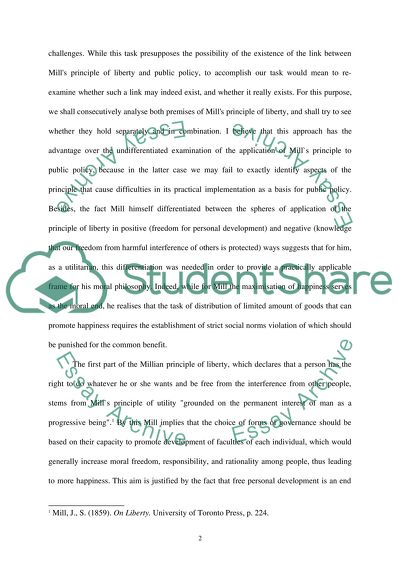Cite this document
(John Stuart Mill's Principle of Liberty Essay Example | Topics and Well Written Essays - 2000 words, n.d.)
John Stuart Mill's Principle of Liberty Essay Example | Topics and Well Written Essays - 2000 words. https://studentshare.org/sociology/1508233-john-stuart-mills-principle-of-liberty
John Stuart Mill's Principle of Liberty Essay Example | Topics and Well Written Essays - 2000 words. https://studentshare.org/sociology/1508233-john-stuart-mills-principle-of-liberty
(John Stuart Mill'S Principle of Liberty Essay Example | Topics and Well Written Essays - 2000 Words)
John Stuart Mill'S Principle of Liberty Essay Example | Topics and Well Written Essays - 2000 Words. https://studentshare.org/sociology/1508233-john-stuart-mills-principle-of-liberty.
John Stuart Mill'S Principle of Liberty Essay Example | Topics and Well Written Essays - 2000 Words. https://studentshare.org/sociology/1508233-john-stuart-mills-principle-of-liberty.
“John Stuart Mill'S Principle of Liberty Essay Example | Topics and Well Written Essays - 2000 Words”. https://studentshare.org/sociology/1508233-john-stuart-mills-principle-of-liberty.


